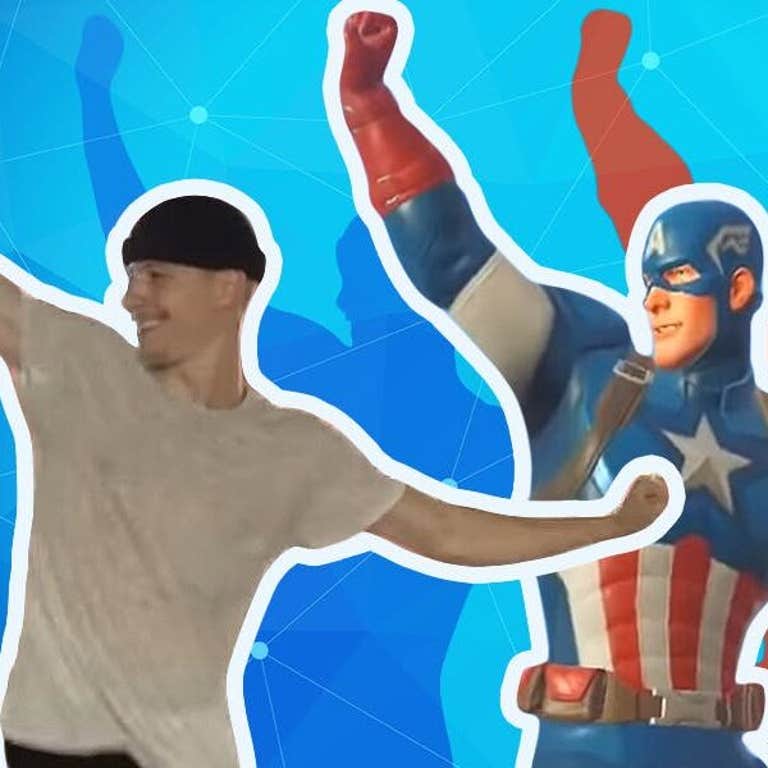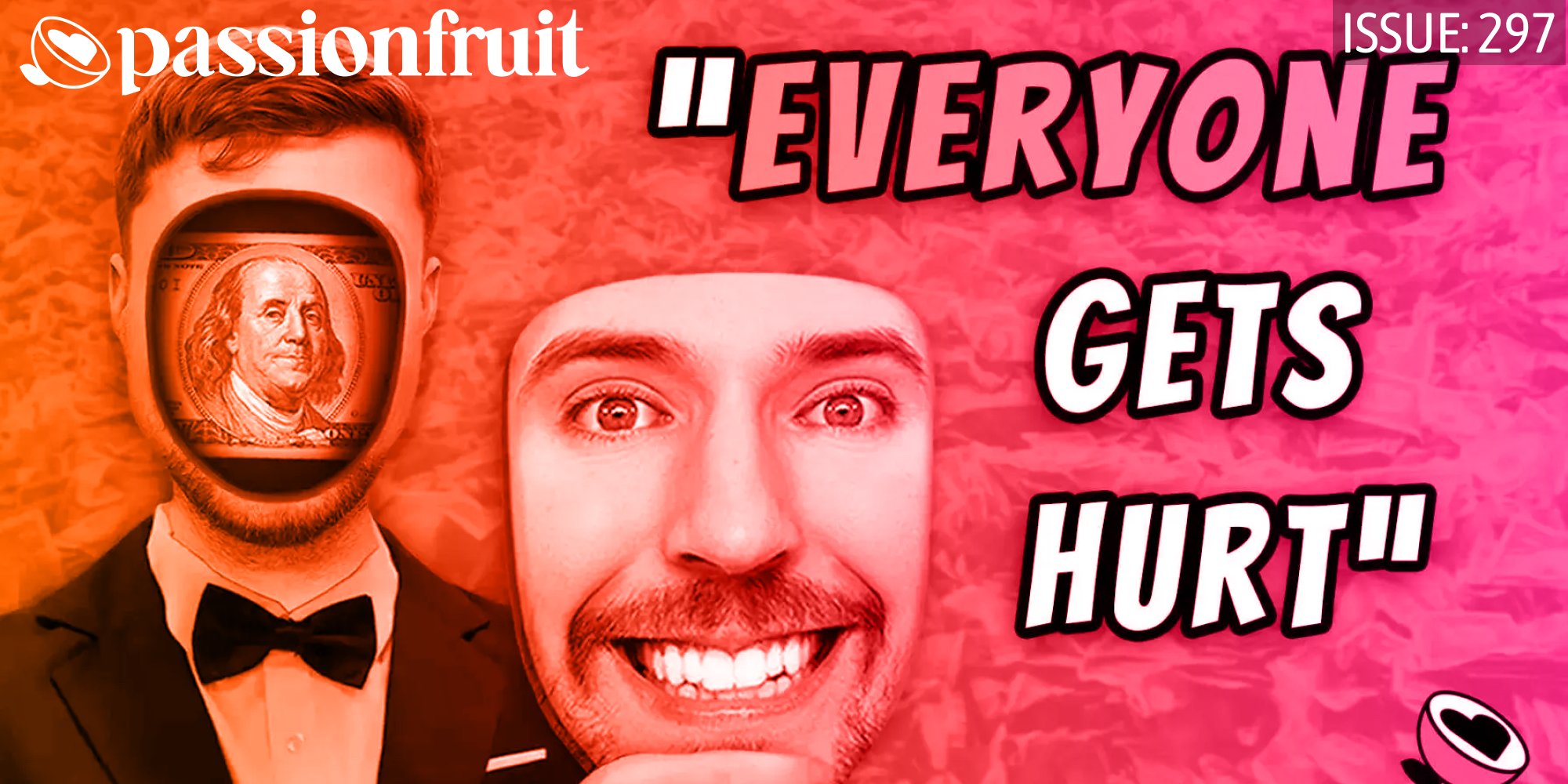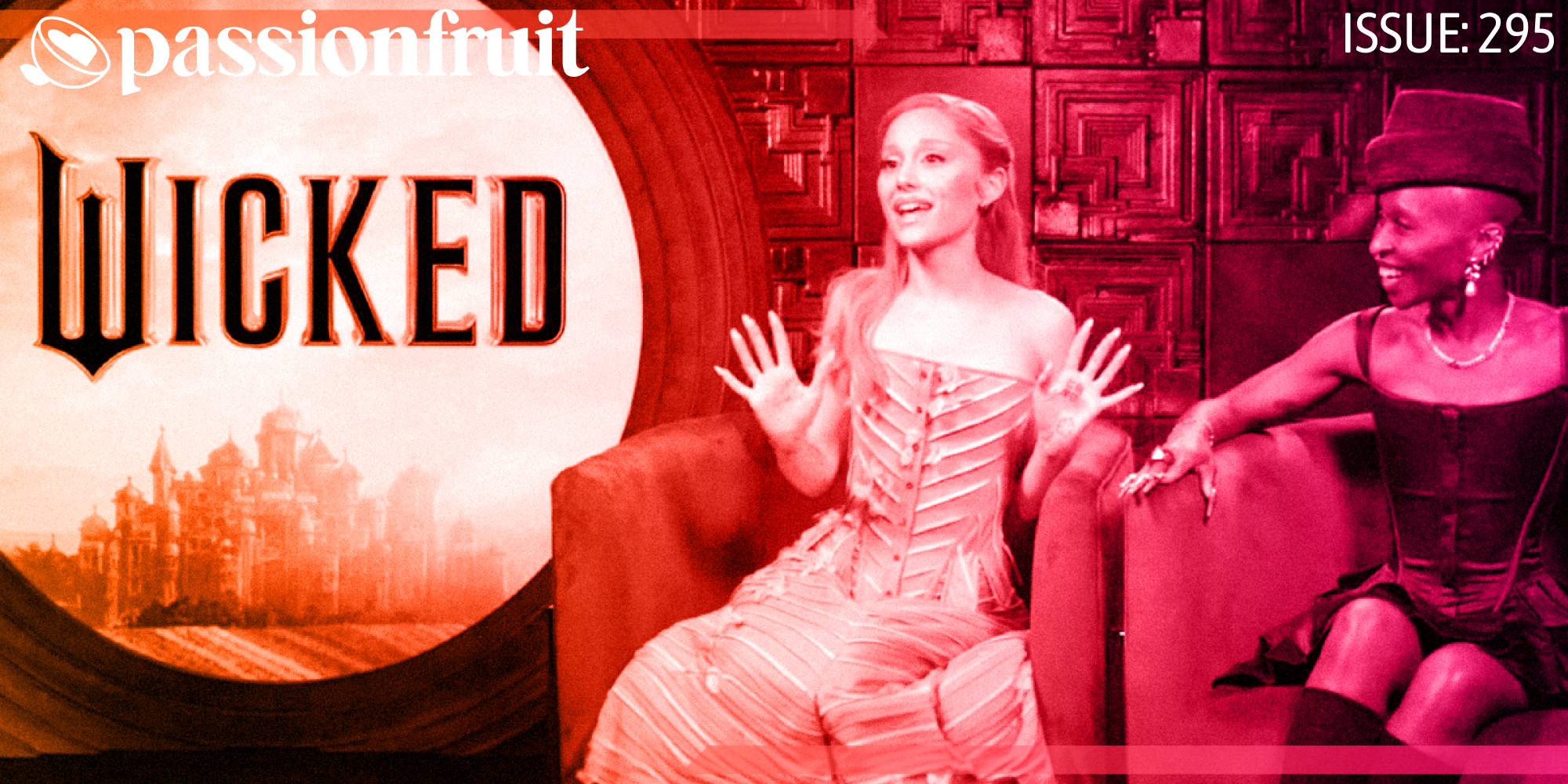CREATOR NEWSLETTER
Issue #185 | November 14, 2023
“Is anybody else seriously depressed that they’re getting rid of the Creator Fund?” TikToker @laurawiththecurls said in a video this week. “Was I ever making an earth-shattering amount of money on here? No. … But it was nice to get just a little bit of extra money monthly so that I could buy something for myself and not feel like I’m pulling from the monthly bills.”
Over the past week, many short-form creators on TikTok have been upset. Last Monday, TikTok suddenly announced it is shutting down its Creator Fund and is instead encouraging creators to apply for the “Creativity Program” — which is a lot like the Creator Fund, but only rewards content over one minute long. This is quite the snub for creators’ whose whole strategy revolves around TikTok’s culture of punchy, viral clips.
However, let’s be real. The Creator Fund … sucked. And although some people received a little supplemental income, it didn’t really help creators make a living. Back in 2022, creator Hank Green made an infamous viral video criticizing the fund for its meager payouts. TikToker SuperSaf, who has 652,500 followers on TikTok, replied to Green on Twitter, revealing that he only made about $137 U.S. dollars for 10 months on the creator fund.
Fortune soon reported that creators were getting paid “mere pennies” by the fund for their videos that accumulated hundreds of thousands to millions of views per month. Creators were required to have over 10,000 followers and 100,000 video views in the last 30 days to cash out, but other than that, the fund was incredibly opaque, and no one knew the metrics used to decide the payout each individual creator received. It was a fund that TikTok alleged was an investment of an initial $200 million, then raised to $1 billion, then to $2 billion across three years. But spread thin across numerous creators, most people received very little.
While some creators were getting a few bucks off it, the Creator Fund was never posed as a plan to give creators a clear cut of the revenue they helped generate — it was more designed from a PR perspective to sound like TikTok was launching a finite charity fund to “support” creators.
To be fair, TikTok isn’t alone in doing this. There’s been Pinterest’s Creator Inclusion Fund. Spotify’s Creator Equity Fund. Snapchat’s Spotlight “Rewards” program. Twitter’s “Spark” Fund. On these programs’ websites, you’ll find lots of language about helping and supporting artists: We’re “celebrating and supporting creators,” we’re “rewarding emerging creators,” and we’re helping to “elevate and support an inclusive and diverse portfolio of artists and creators.” Yet these websites offer basically no language clarifying the actual mechanics of how these payouts are calculated or divided out.
These “funds” and “programs” have red flags plastered all over them. By framing the programs as “giving back to the community,” it paints creators as hobbyists — people who make content for fun, people who make art simply for the sake of passion and community. It plays into the exploitative media myth that people who make content don’t want real jobs. And ironically, these platforms treating paying artists as charity funds damages the legitimacy of a career in the arts.
Certainly, there are millions of hobbyist and amateur content creators, in the same way that there are hobbyist painters, sculptors, etc. And on the flip side, there is a tiny percentage of creators who “make it” as entrepreneurs, running large businesses and making millions of dollars. But the reality is, there are a lot of people in between hobbyists and business owners.
Creators are sometimes part-time, gig, or contract workers. Many creators hustle to make their content a full-time career. Forbes estimates about 2 million professional content creators were working in 2022. Yet Linktree’s 2022 Creator Report found that only 12% of the full-time creators surveyed made more than 50K a year. And despite all these professionals who identify as creators, being a social media creator is not even listed as a job by the U.S. Census Bureau.
People want transparency on how the revenue they help generate is being split up because, for a lot of people, this is their job. And unlike for any other job, there are no labor laws protecting creators. There are no sick days, PTO, or minimum wages. Creators’ work is not viewed as labor at all, despite generating billions of dollars from ads playing next to their videos and billions of users hungry for more content.
Most of the $250 billion each year generated in the creator economy is going to TikTok executives and stakeholders … and let’s be honest, the tech and investment bros are taking much longer lunches and vacations than a full-time creator. To them, the creator fund that makes them look altruistic is barely a drop in the seed money bucket. It’s a tax write-off.
The way TikTok has positioned the new Creativity Program is as sneakily insidious as its predecessor. The language used to promote it says it is there to “help creators.” But TikTok is less of a supporter of the arts, and more like an agent and studio system rolled into one — connecting content creators with video creation tools, distribution channels, and ad placements. And unlike with some agents or studios, when you use TikTok, you’re signing away all your rights to all the revenue generated from the content you create (peep these terms of service).
THE COMMENTS SECTION
“You’re not going to pay any of your short-form content creators who have made your platform the platform that it is? This is like a boss going into work and telling you that you’re not being paid but you still have to work.”
— Creator @okcron on TikTok shutting down its Creator Fund.
Fortune reported in July that some creators (who have to be at least 18 years old, have more than 10,000 followers, and have a minimum of 100,000 “valid” video views in the last 30 days to qualify) were making “thousands of dollars” monthly from the Creativity Program. It seems the results have been promising for many users, but I’m skeptical.
Payments are allegedly based on “RPM,” or a creator’s “average gross revenue per 1,000 qualified views.” But while creators can see their RPM, they still don’t know what exact metrics are used to calculate it. TikTok only vaguely mentions it will fluctuate based on region, levels of engagement, and “authenticity” of a view (aka, if it’s deemed to be a spam/bot view or not). People are already expressing some confusion online over why their RPM is rising or dropping.
And beyond that, RPM (at least on the surface) appears to be calculated after TikTok takes its undisclosed cut. It’s not clear how much TikTok is keeping versus giving away to creators. (A better example of a clearer program would be YouTube’s Shorts monetization program, which gives an explicit 45% of ad revenue back to creators, and provides a little more guidance on the metrics used to split up the pool of revenue between creators.)
Until we can see exact criteria and metrics on how TikTok — or any of these programs or funds — is determining who gets what, this is not a viable monetization path for many creators. And based on TikTok’s record with the Creator Fund, they are happy to yank away programs from creators at any time. Who’s to say when they will stop valuing long-form videos and decide to sunset the program in favor of, say, a Creator Livestream Fund. (Ice cream so good!)
At the end of the day though, if creators are actually getting thousand-dollar paychecks in their bank account each month, it’s a step in the right direction. As long as creators get paid equitably and transparently, I’m happy. Just please don’t promote it as some sort of charitable endeavor to “elevate and celebrate emerging voices” — call it what it is, payment for a service provided.
– Grace Stanley, Newsletter and Features Editor
NEW HORIZONS
From the Collapse of The Escapist, a Second Wind Rises
Former creators behind gaming site the Escapist are finishing what their website started.
By Steven Asarch, Passionfruit Contributor
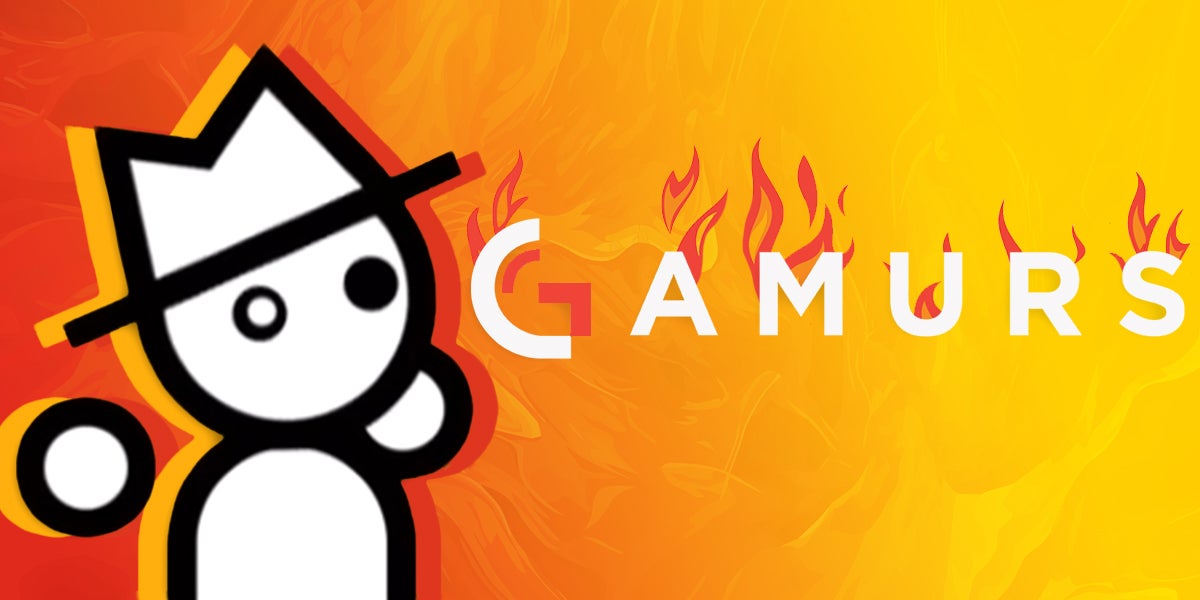
SPONSORED
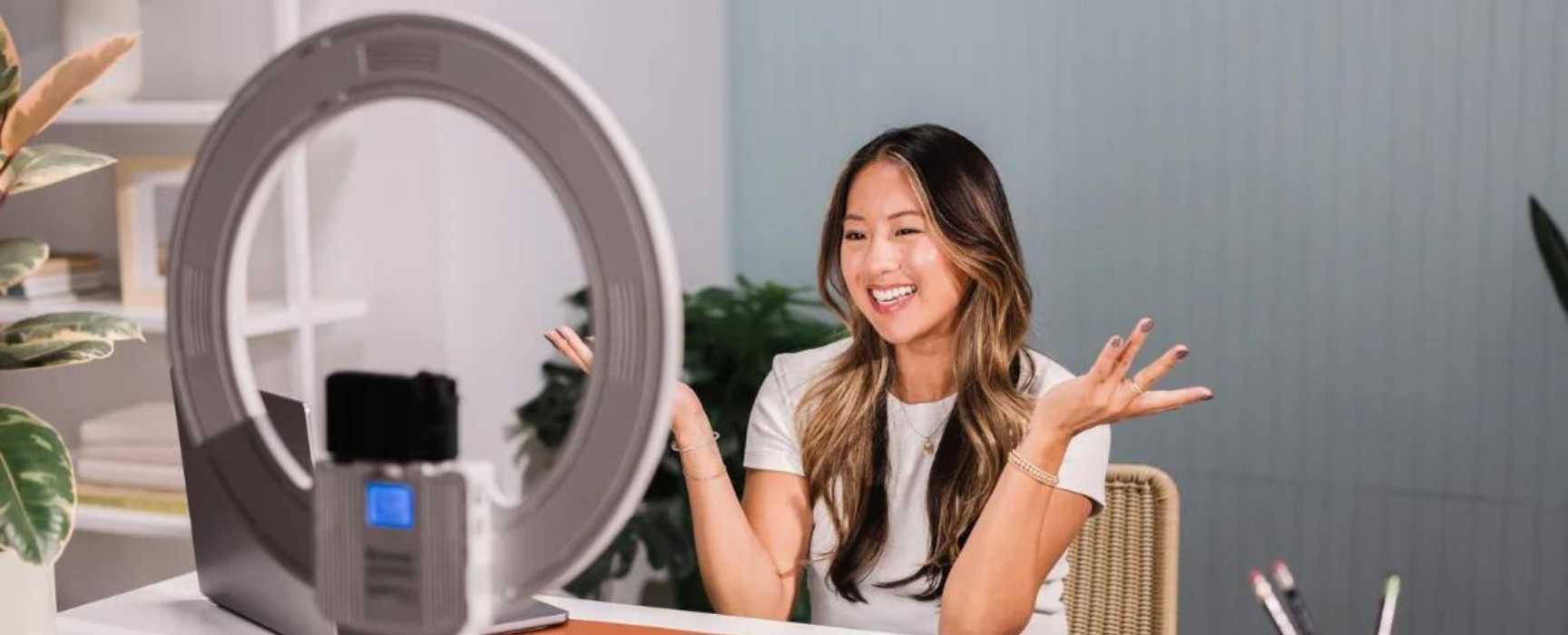
Illuminate your creative vision with Lume Cube
The best ring light on the market just got better. Lume Cube’s special edition Ring Light Pro in White looks just as good as it performs, elevating and enhancing any creative space. Experience a new level of creativity with the best cordless ring light on the market.
IN THE BIZ
- Activision Blizzard is ending its esports league for ‘Overwatch.’ Many gaming and esports creators are devastated by the news.
- Creators are also mourning the death of video chat roulette site Omegle, as it was the bread and butter for some who used the app to film random encounters with strangers.
- YouTube is testing a generative AI tool that organizes comments into major themes.
- Twitch announced it is removing its feature that lets viewers pay money to pin posts in chat.
- X added live stream chats to its platform. It also is going to let creators add timestamps to video posts.
- Twitch CEO Dan Clancey has been driving around in a van across the country to try to court creators angry about the decrease in revenue-sharing on the platform.
- TikTok is hosting a global live music event, highlighting emerging creators and featuring celebrities like Cardi B, Niall Horan, and Charlie Puth. It will take place on Dec. 10 in Mesa, Arizona.
- The first ever “Vtuber Awards,” hosted by VTuber Filian and organized by Mythic Talent, will take place in Los Angeles on Dec. 16, 2023.
LAW
Dance Moves: Creators’ Next Legal Risk or Revenue Stream?
A court revived a lawsuit by the internet’s favorite choreographer Kyle Hanagami against Fortnite, but what does that mean for creators?
By Franklin Graves, Passionfruit Contributor
LABOR
Actors’ Strike Ends: SAG-AFTRA Reaches Tentative ‘Historic’ Deal With AMPTP After Four Months
The four-month long SAG-AFTRA strike is over at last.
By Rachel Kiley, Passionfruit Contributor
JOB BOARD
- The creators behind AMP are looking for a producer and a video editor.
- Creator NichLmao is looking for a video editor.
- Mythical Entertainment is looking for a camera operator/editor.
- Creator Ryan Trahan is looking for a social media/short form content director.
- Creator Brittany Broski is looking for a freelance assistant video editor.
YOUTUBE MADE ME DO IT
The Reactorverse comes to life! Crossing the Streams brought together creators from all over the globe to share their thoughts on the epic anime series “Attack on Titan” for our first crossover event. Check it out and subscribe to Passionfruit’s YouTube channel so you don’t miss anything.


Copyright © 2022 Passionfruit, All rights reserved.
You are receiving this email because you signed up to get the latest tips, tricks,
and trends in the creator economy from Passionfruit.
Have an idea for our next big story or want to get featured? Email us at tips@passionfru.it
Don’t want to hear from us anymore?
Click here to unsubscribe
To view in your browser click here

